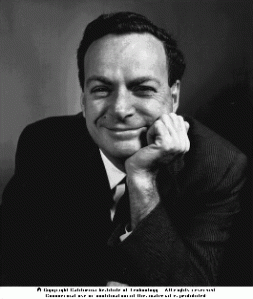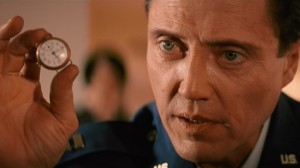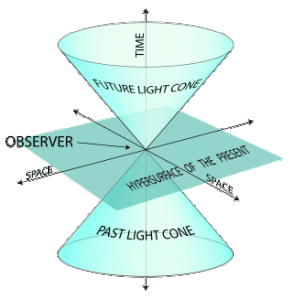 The Pleasure of Finding Things Out by Richard Feynman
The Pleasure of Finding Things Out by Richard Feynman
Here’s the problem with having high expectations: they’re so often dashed.
In my years trawling the web and being a science nerd, I heard a lot about Richard Feynman. There are legends about him, that he was the Puck of physics – brilliant, untamed, and really, really funny. I read another book of his, Surely You’re Joking, Mister Feynman, and enjoyed it thoroughly. I thought that this book, with a title that appealed to me and by an author-scientist whom I respected, would be as much fun.
When I got the book, I was expecting to read a lightning-quick volley of ideas that would set my mind alight with the wonder and infinite possibilities contained within a lifetime’s pursuit of science.
Yeah, that didn’t quite happen.
Don’t get me wrong – Feynman is indisputably brilliant, and far from the classic mold of the physicist. He had no patience for titles or honors, and in fact couldn’t give a damn about them as long as he had science to do. He would tell Nobel laureates – men whose names were bywords for scientific brilliance – that they were wrong, without hedging or worrying about their egos. He liked to play the bongos, loved a good party, and delighted in playing tricks. One of his more irritating hobbies was safe-cracking, and by the time he left Los Alamos labs after the Manhattan Project there were no places left to hide secrets from Feynman.So Feynman was no doubt a really cool guy, the kind of scientist you would want to invite to your party without hesitation. His first interest was science, and as scientist go, he was one of the best.
That doesn’t mean that reading him is always entirely entertaining.
The book is, for me, not very readable for two reasons. The first is that it goes get terribly technical at times, and while I love science, I am not educated enough in it to grasp a lot of the technical details. Indeed, it broke my heart when Feynman said that, when it comes to physics, if you don’t know the math, you don’t know the science. True, yes. Humbling, yes. But still….
Were I editing a collection of Feynman’s work, I would have started with the Big Ideas, defenses of science as an integral function of humanity’s ultimate progress. Then, having made the reader comfortable with how Feynman thought, they could have gotten into what Feynman thought.
But no, the book starts off with highly technical lectures on quantum electrodynamics and the difficulties in getting parallel computers to work. If you don’t know a lot about how computers work, or you don’t have a detailed awareness of atomic theory, you’re going to be a little lost. Or a lot lost. Even his minority opinion on the Challenger accident, something I was especially keen to read, was far too dry to be as enjoyable as I wanted it to be.The second reason why I didn’t really enjoy this book is because a lot of it is transcripts of speeches and interviews. Very few people are able to speak in a readable manner, and someone with a mind like Feynman’s – always moving, always active – isn’t one of them. There are a lot of asides and false starts, wandering thoughts and truncated paragraphs. Even his more structured speeches aren’t structured very well for the reader.
I think it would be different to listen to him, to sit in the audience and watch the man speak. Indeed, if you go to YouTube and look around, there are a lot of videos from interviews that he gave, and he’s great fun to watch. He had the kind of infectious energy and enthusiasm that would make it easy to gloss over structural problems and really enjoy the speech. When you listen, you easily get the passion that he has for science and for physics in particular. Turning speech into print is always dangerous, however, and here I think it fails.

The first image in a search for “Feynman Acolytes.” Tell me this man couldn’t have been a cult leader.
For Feynman, science wasn’t a rigor or a job, it was a joy. He attributes a lot of that attitude to his father, an unlikely fan of science. As a uniform salesman, Feynman’s father was not a scientist and had no scientific training. But he raised his son to think about the world. Rather than tell him why, for example, a bird picked at its feathers with its beak, encouraged Richard to observe the bird, to form a hypothesis and then see if observations confirmed it. His father taught him to question everything, to form his own opinions about the world, and by doing so, made him into a scientist from an early age.
It is that attitude which should be the dominant theme of this book, rather than Feynman’s technical genius. He says, over and over, to doubt everything. Ask yourself why things are the way they are, rather than just relying on what other people tell you. Observe, experiment and test, and you’re doing science.
He has some disdain for social sciences, and a pretty healthy dose of misogyny in a couple of places, but if he is arrogant, then it is probably deserved. Feynman was a man fascinated with how the universe worked, all the way down to its smallest components, and that was his passion. Not awards, not titles, not praise – just the work, the discovery and the pleasure.
————————————————
“I don’t know anything, but I do know that everything is interesting if you go into it deeply enough.”
– Richard Feynman, The Pleasure of Finding Things Out
————————————————














































